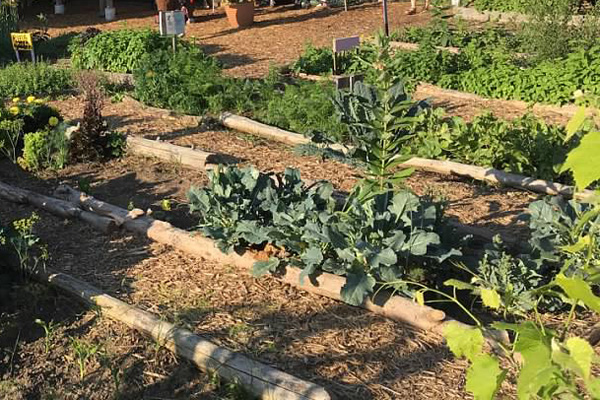City Blooming Can Be Fun For Everyone
Fascinated in expanding food for sale in the City of Chicago? Below is a checklist of frequently asked questions pertaining to the rules and guidelines that cultivators must take into consideration when planning a city agriculture project.
The zoning amendment does not customize any type of various other codes managing composting, structure licenses, acquiring or leasing City had property, company licenses or environmental contamination. There are existing codes that regulate these issues and they continue to be in complete impact and might be applicable to your task. Area gardens are usually owned or managed by public entities, public organizations or community-based organizations and preserved by volunteers.
Urban farms grow food that is planned to be offered, either on a not-for-profit or for-profit basis. Due to their industrial purpose, city farms need an organization license.
The smart Trick of City Blooming That Nobody is Discussing
The quantity of garden compost material can not go beyond 25 cubic backyards at any type of offered time according to the standards in 7-28-715 of the City's Municipal Code. Because the soil at the majority of new garden sites needs amending, compost, soil, timber chips, or various other materials can be gotten to construct or boost the growing area.

If a structure authorization is needed after that the hoophouse will be considered an accessory structure. You can figure out more concerning the structure permit requirements by contacting the Department of Buildings. The 25,000-square-foot size restriction is intended to stop a solitary area garden from dominating a provided block or detracting from the block's existing residential or business personality.
The limit does not use to yards situated in Public Open Room (POS) areas. Can there be more than one area garden that is 25,000 square feet on a single block? Fence is not called for, nonetheless, yards that have huge parking areas may be called for to install fencing or various other landscaping attributes.
Rumored Buzz on City Blooming
B1 & B2 districts call for that all commercial use tasks be performed indoors. Is fence needed for city farms? Fencings might be needed, along with landscaping and testing, for specific car parking areas and outdoor work or storage areas depending on place and the specific activity taking place.
Urban ranches call for building permits and zoning authorizations prior to construction (fruit and click for more vegtables). Other forms of city evaluation may be required depending on particular structures, activities, size, landscaping, licensing, public health and stormwater administration problems.
Yes. The kind of permit is determined by what is taking place at the website. The Department of Organization Matters and Customer Security can assist figure out the particular kind of organization license that's required. Yes. Off road car park is required for the majority of commercial tasks in Chicago. The required variety of auto parking areas is based on the number of staff members servicing site and not the square footage of the expanding room.
The 6-Minute Rule for City Blooming

An urban ranch can offer garden compost material generated on website, nonetheless, the operation should conform with the regulations in 7-28-715 of the Chicago Municipal Code. Aquaponic systems are allowed inside on metropolitan farms in several zoning areas.
Approximately 5 hives or nests of honey bees may be kept as an accessory usage. Beekeepers have to sign up with the Illinois Division of Farming. For more details concerning the suggested zoning amendment you might contact the Division of Real Estate and Economic Advancement, Bureau of Preparation and Zoning at 312.744.8563.
Farming in cities and urban areas A city farm in Chicago. Urban agriculture describes different practices of cultivating. https://mcliouw-keings-breuncy.yolasite.com/, handling, and dispersing food in city locations. The term likewise applies to the area tasks of animal husbandry, aquaculture, beekeeping, and horticulture in a city context. Urban farming is identified from peri-urban agriculture, which takes place in backwoods at the side of suburbs.
About City Blooming
, that look for to form social networks established on a common principles of nature and neighborhood holism. These networks can develop by method of official institutional support, coming to be incorporated right into regional community planning as a "change community" movement for sustainable metropolitan growth.
In either instance, the much more direct accessibility to fresh vegetable, fruit, and meat items that may be realised with metropolitan farming can improve food protection and food security while lowering food miles, causing lower greenhouse gas emissions, therefore adding to environment modification reduction. A few of the very first proof of city agriculture originates from Mesopotamia.
Comments on “The 9-Minute Rule for City Blooming”